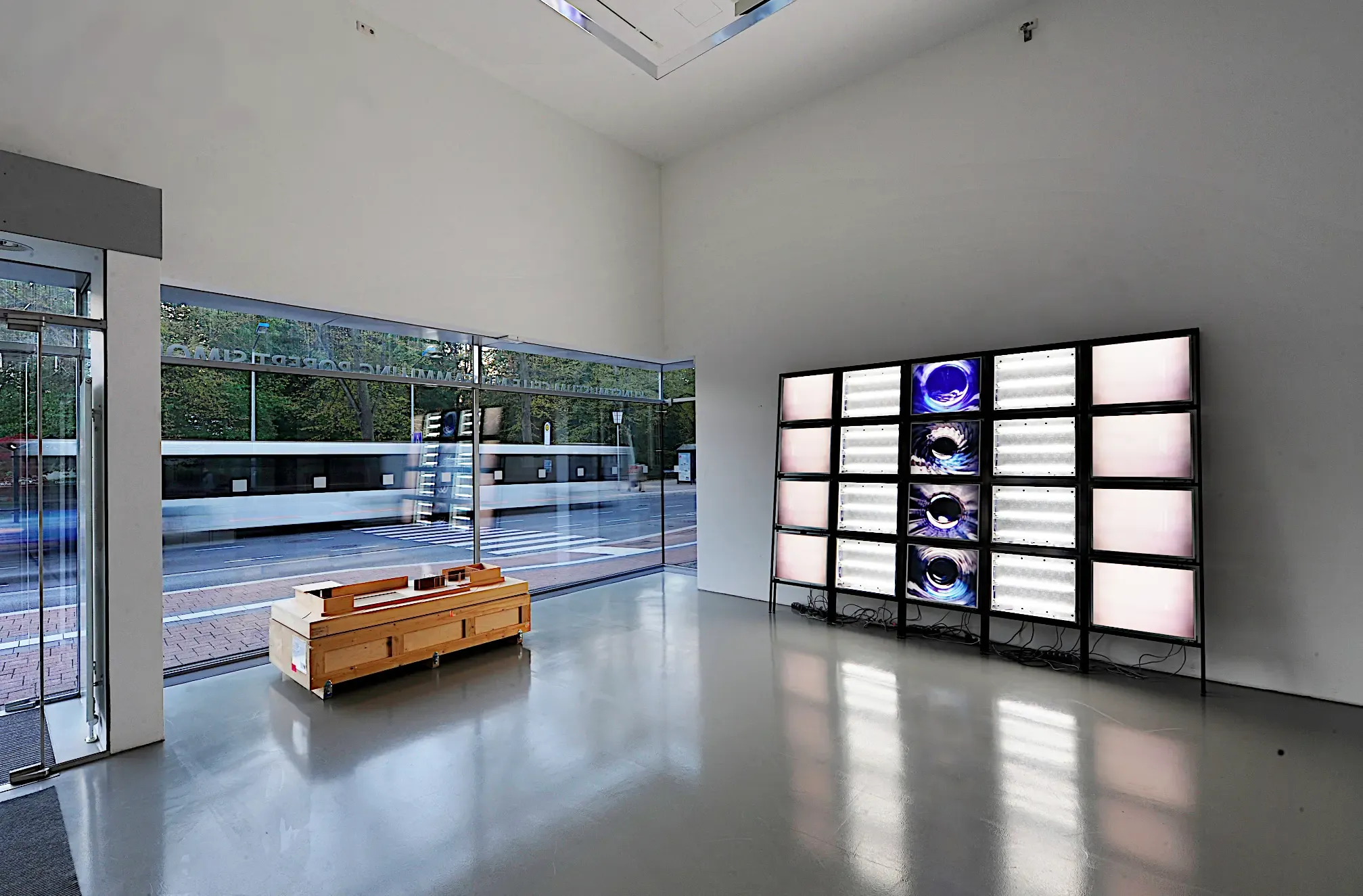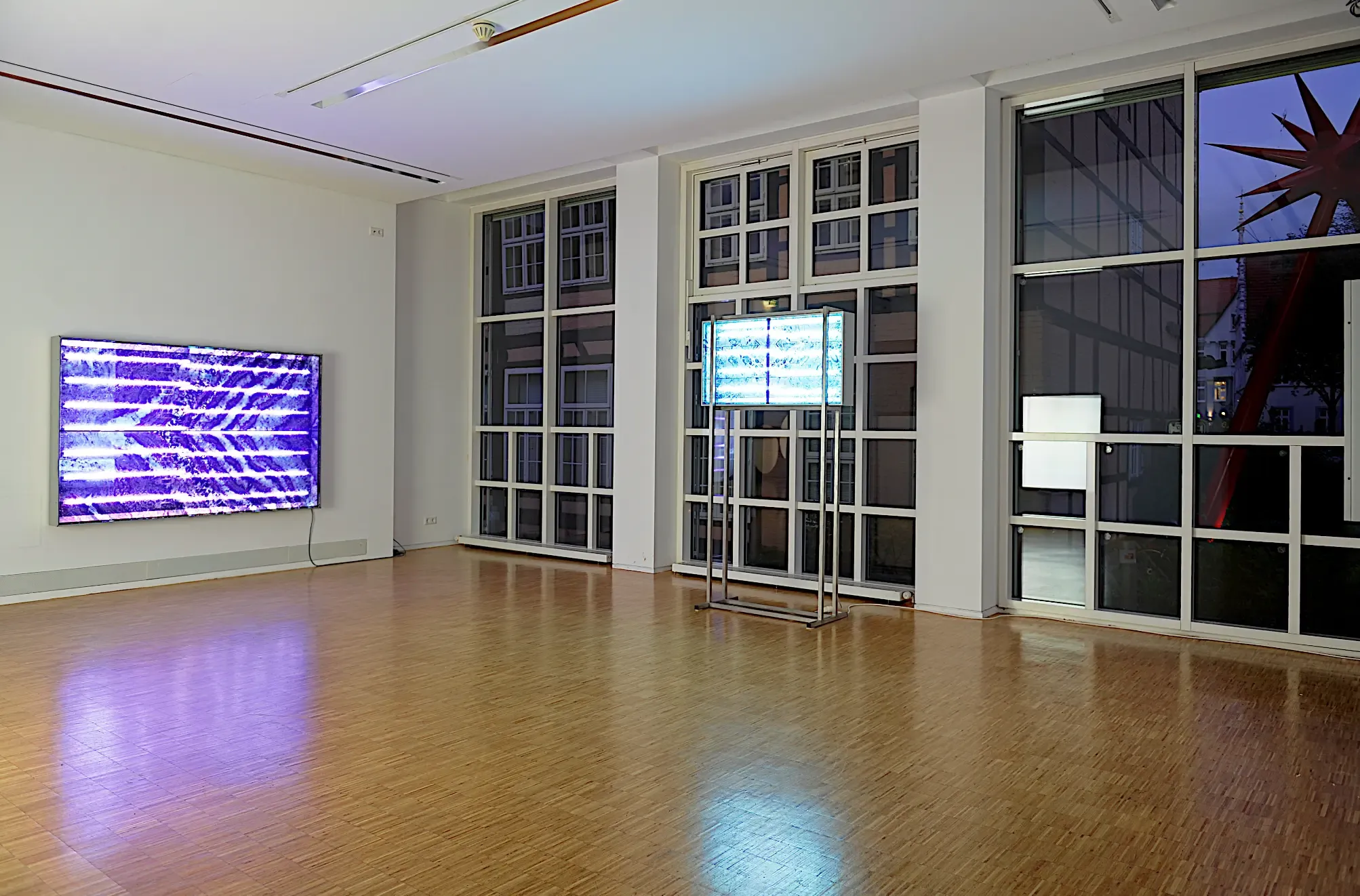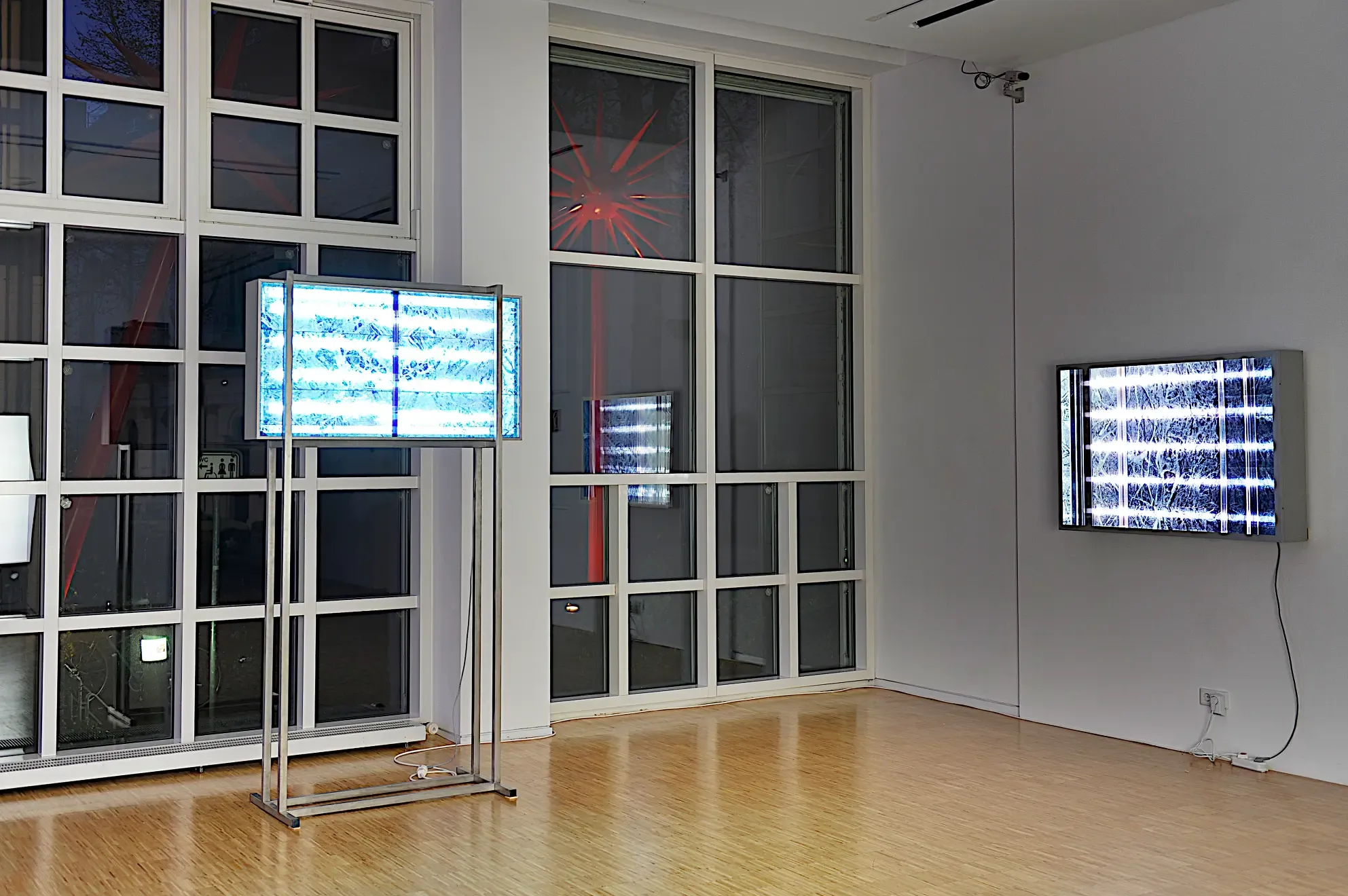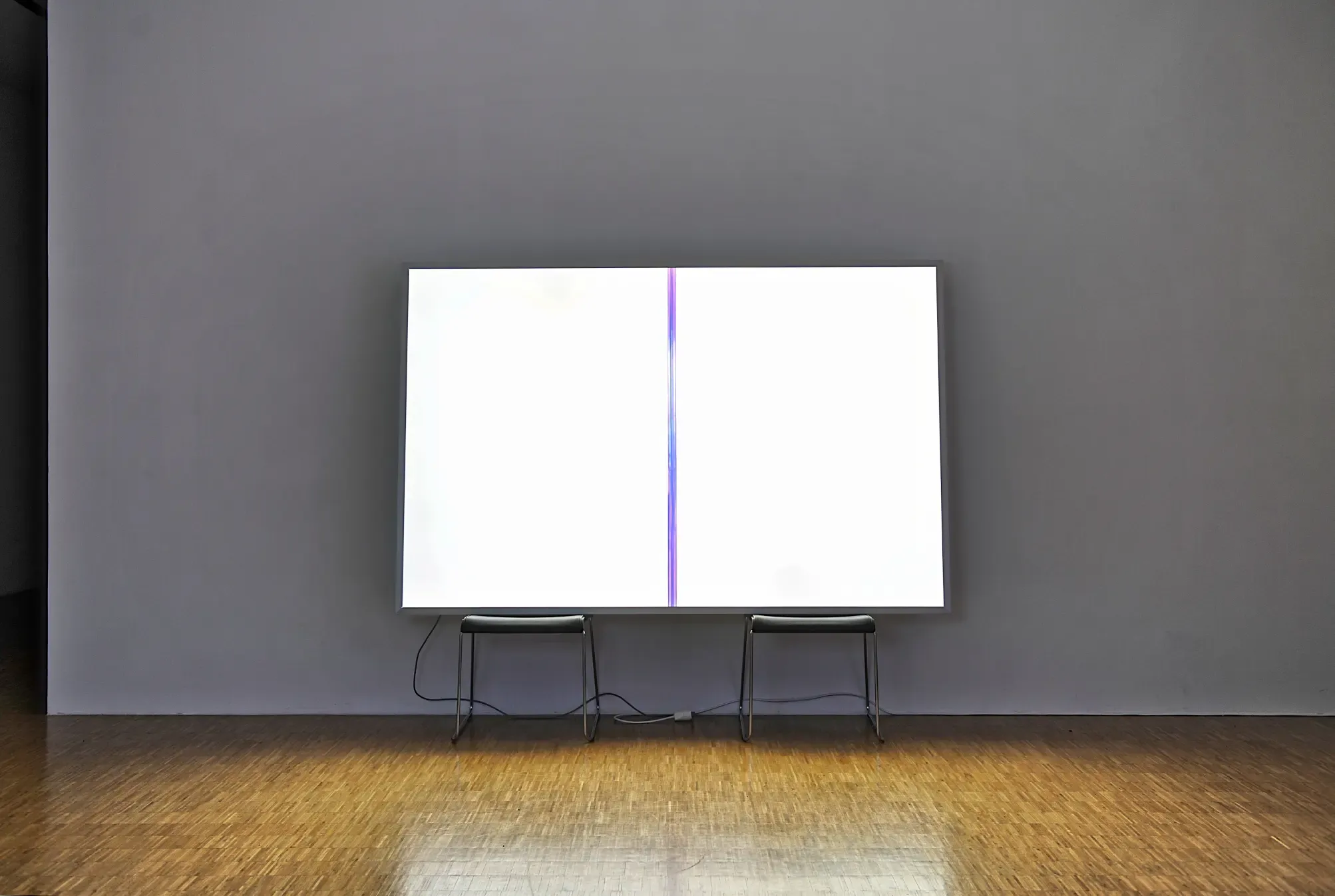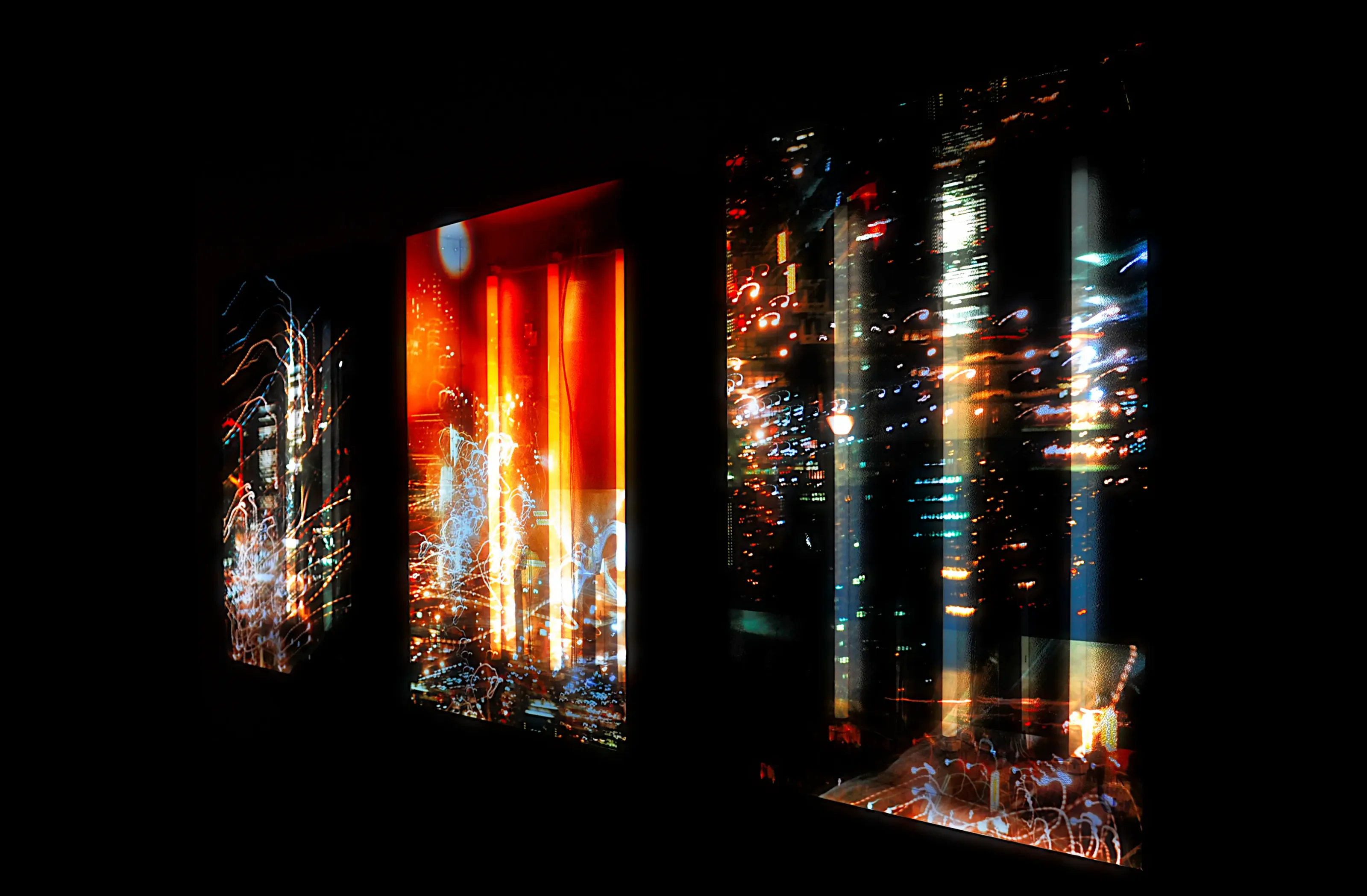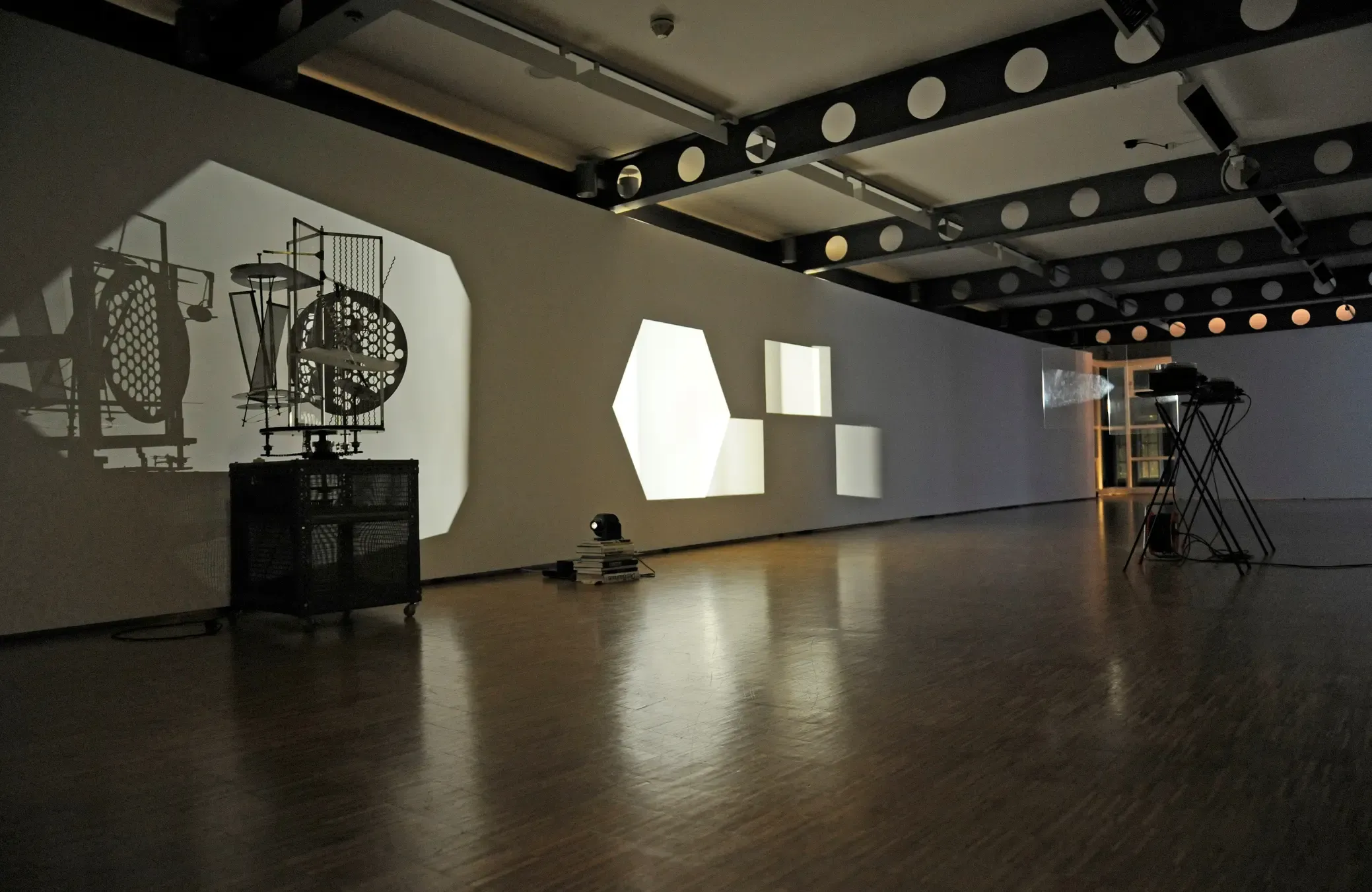mies-mies
Kunstmuseum Celle, 2011–2012
The changing relationship between light, space, and architecture is the focus of the special exhibition “Mischa Kuball: mies-mies” at the Kunstmuseum Celle with the Robert Simon Collection. International media and conceptual artist Mischa Kuball also incorporates the museum building into his work: a changeover switch causes the white backlighting of the glass foyer cube to move slowly up and down, making the building appear to breathe. “The work ‘inhale/exhale’ is the prelude to the nightly light art parcours of the 24-hour art museum,” explains artistic director Robert Simon. “A walk in the dark around the building offers further insights from the outside into the current special exhibition by Mischa Kuball.”
With his effective light intervention on the building, Kuball opens up a far-reaching space for reflection on the interplay of light and architecture. This also applies to the “mies-mies” block of works, the centerpiece of the exhibition at the Kunstmuseum Celle. The starting point for this is Kuball's long-standing engagement with the pavilion building that Ludwig Mies van der Rohe created in 1929 for the World Exhibition in Barcelona. The “Barcelona Pavilion” embodies Mies van der Rohe's vision of eliminating the separation between architecture and its surroundings, a vision that shaped the style of the 20th century. The open floor plan, transparent glass facades, and sophisticated lighting as an active part of the spatial design are characteristic of the building's openness from the inside to the outside. Mischa Kuball examines and reflects on this milestone of modern architecture, which has been accessible to visitors again since 1986 as a reconstruction. In large-format light boxes, he reproduces and interprets motifs and details that express the special role of light. They focus on the reflections, refractions, and reflections of light on polished surfaces that merge rooms or segments of space. Insights and perspectives, organized in the grid of the light boxes, overlap in the visual quotations of “mies-mies” to form a multi-layered “re-vision” of the building and a clear-sighted reflection on the medium of light.
Other light installations in the exhibition, such as “Projection Room 1:1:1 spinning” and a replica of Moholy-Nagy's light-space modulator for study purposes, explore the experience of space through the combination of light and movement. The light projections scan surfaces and walls, challenging our perception of form and distance. Space, time, and light converge, opening up concentrated spaces of experience.
